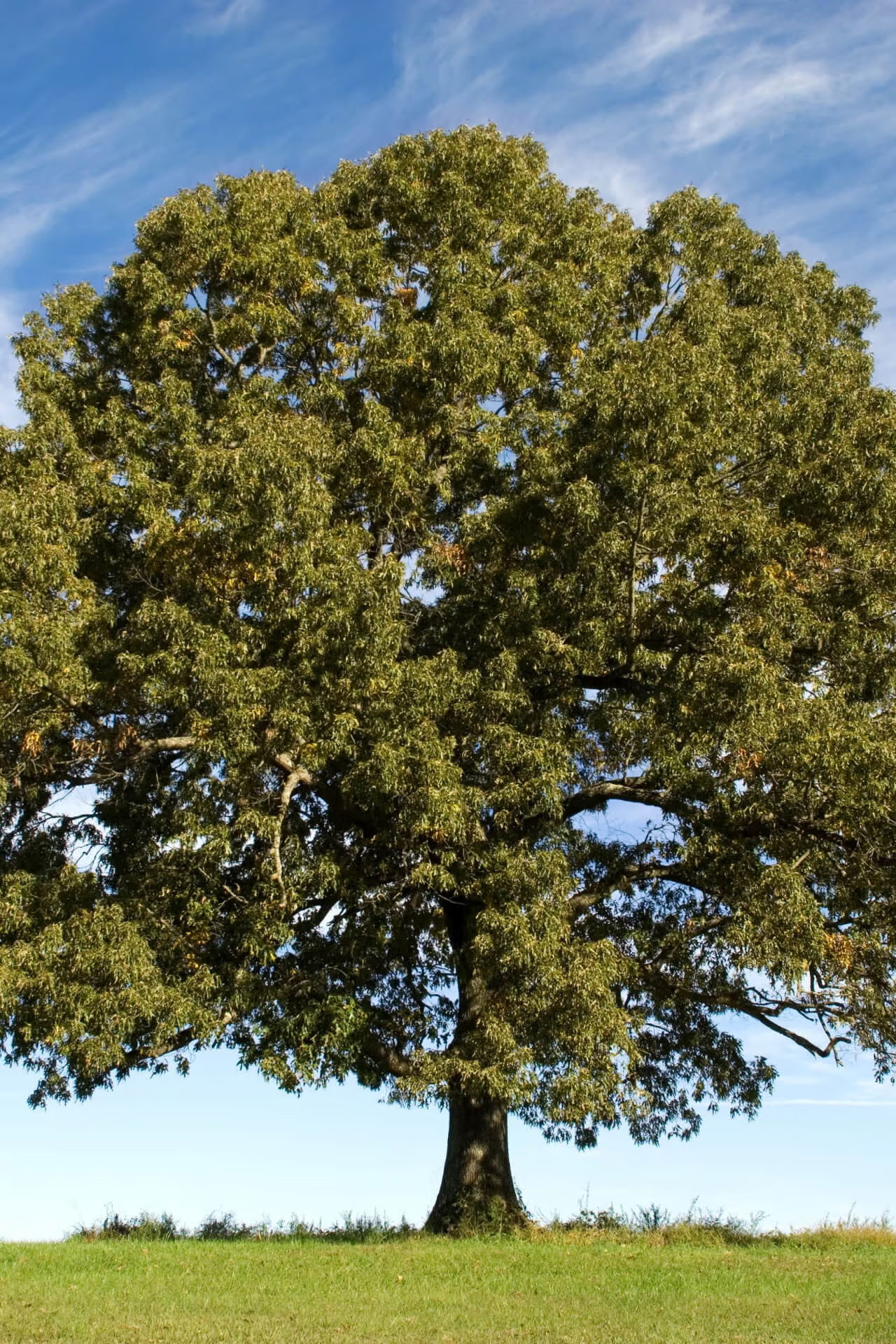
Perennials
Attractive fall color and acorns
Long-lived, resilient tree species
Beautiful, large, spreading canopy
Thrives in
ZONE 3ZONE 4ZONE 5ZONE 6ZONE 7ZONE 8ZONE 9Planting Season:
Nov-AprilWhen you add one plant to cart, it automatically adds the second one free on Bogo deals.
The White Oak Tree is a majestic and long-lived deciduous type native to eastern North America. It is known for its iconic rounded crown, deeply lobed leaves, and valuable wood used in furniture and construction.
Growing it on your property can be an excellent way to branch out and tend to new types of plants. One such option that you consider is this. They are a distinctly recognizable species many hold in high regard. Let's examine why this plant is so revered and why you might wish to make space for it in your yard.
This acorn is said to be the most palatable in their species, making them especially appealing to local wildlife looking for a snack. Its low-hanging branches offer food for wildlife like deer, while those higher up, like birds, often spend time in its branches to catch insects. These magnificent plants support a whole ecosystem, attracting various critters that will benefit other areas of your property.
Beyond just food, these towering spectacles offer shelter in the form of cavities that form in it, often housing smaller rodents or flying creatures. If you're a fan of either, you're sure to enjoy seeing families of animals call your great and mighty addition their new home.
Some areas of your property might need something much more significant to fill the space, and these are an excellent and welcome addition. Over time, they can grow to 80 or even 100 feet tall, towering over your property. Who knows? You may even want to plant multiple ones throughout your property and create a pathway of these awe-inspiring monoliths.
They Tend To Benefit Their Surroundings
White Oak Trees have many uses, including reducing soil erosion with robust root systems and providing shade for other plants that need it. Unlike other types, this species is said to be more resistant to rot, meaning it may encounter fewer issues regardless of whether you're transplanting it or growing it from a sapling.

Height at Maturity
Over 25 Feet
Care
White Oak Trees thrive in well-drained soil with regular watering, particularly during dry periods. They benefit from occasional deep watering and mulching to retain moisture. Trim in late winter to clear dead or damaged branches, promoting a robust and healthy structure.
Plant Reproduction
White Oak Tree (Quercus alba) spreads primarily through acorns and root sprouts.
Plant bare root trees during the dormant season in early spring or late fall (November through April). Dig the hole twice as wide as the roots so the soil is well-drained. Position the tree so the root flare is at or just above ground level. Fill the hole back with the soil you dug from and water. Maintain soil moisture, especially in the tree's early years, by providing deep, regular watering. Apply a 2-4 inch mulch away from the trunk at the base to retain moisture and suppress weeds. Prune trees during the first few seasons to establish strength and resilience, remove damaged branches, and continue maintenance pruning as the tree matures. Regularly inspect for pests and diseases and apply integrated pest management practices. Protect young trees from mechanical damage and extreme temperatures with tree guards, and stake them if necessary for support, removing the stakes after one or two years.
Shipping date depends on the date displayed and chosen when you order from the product's page.
We only accept returns on plants verified dead. If you think your plants have died, we offer a 1 year warranty, please use use this File a Claim Link to verify dead plants and start with return warranty process.





Majestic Growth:
White Oak Trees develop into large, stately trees with a broad canopy, offering a stunning focal point for any landscape.
Wildlife Magnet:
These trees produce acorns that attract a variety of wildlife, providing a natural habitat for birds and small animals.
Long Lifespan:
Known for their durability, White Oaks can live for centuries, becoming a lasting legacy in your garden.
Strong and Hardy:
White Oak Trees are highly resilient, able to thrive in a range of soil conditions and climates with minimal maintenance.
Caring Tips
Each box contains detailed care instructions and information about your product. But here's the basics.
Care Tips
White Oak Trees thrive in well-drained soil with regular watering, particularly during dry periods. They benefit from occasional deep watering and mulching to retain moisture. Trim in late winter to clear dead or damaged branches, promoting a robust and healthy structure.
Light Requirements
White Oak Trees thrive best in full sun, obtaining at least 6 hours of unaffected sunlight daily. They can tolerate partial shade but prefer bright, open areas for optimal growth and development.
Hardy Planting Zones
3 • 4 • 5 • 6 • 7 • 8 • 9
How often should I water my plants?
How do I know if my plant is getting too much or too little sunlight?
What should I do to prepare my plants for winter?
What are the signs that my plant needs fertilizing?
How can I prevent pests from damaging my plants?
How do I choose the right plant for my climate zone?